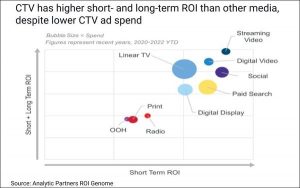In honor of Shark Week (and a love of all things animated), we picked our favorite animated sharks—the trio from Finding Nemo—to see what they could teach us about Explainers.
For those who haven’t seen the movie, please stop reading this and rectify that immediately. We’ll wait.
[waiting]
[waiting…]
[fantasizing about what it would be like to live underwater]
On second thought, since the film grossed nearly $ 1 billion, let’s just assume that you’ve already seen the movie. And that you remember the three scene-stealing sharks from Finding Nemo. A motley crew that includes a Great White named Bruce, a Hammerhead called Anchor and a hyperactive Mako Shark who goes by the name Chum. Here’s the clip:
Although the trio only appears in the film for a few minutes, they manage to leave an indelible mark. And by dissecting how they’re able to pull this off, we can learn a thing or two. In fact, there were three things this scene taught us about the art of creating explainer videos:
1. Avoid the Temptation to do what’s Easy:
Given that the heroes of Finding Nemo are small, easily-digestible fish, it would have been very easy–and made for a long, dramatic chase sequence—to introduce sharks whose only purpose is to devour our little friends. But one of the things that makes Pixar great is how skillfully they manage to subvert expectations. So instead of meeting a trio of hateable sharks, we instead get Bruce, Anchor and Chum; the founders of an AA-like support group determined to treat fish as friends (not food). The cleverness of this dynamic not only makes for a memorable scene but also helps build memorable (and likeable) characters. Which, when crafting an explainer, can be the difference between losing a viewer and sustaining his or her interest from start to finish. All of which is a way of saying that even though there’s often a comfortable logic to doing what’s easy (sharks=enemy), adding a twist, or some complexity, can lead to a greater reward.
2. Laughter is the Best Medicine (to prevent viewer distraction):
In dramas and action movies, “comic relief” alleviates dramatic tension. In an explainer video, comedy can be used to seize a viewer’s attention. And there are some great examples in this sequence that demonstrate how artfully this can be done. What’s particularly worth noting here are the instances that elevate above punchline humor and harness the power of animation to arrive at something more powerful. The first example that comes to mind occurs at the :52 point, where Marlin is seemingly being pushed towards a grisly death, but a quick cut takes us somewhere much funnier: into a meeting where, once again, the film rises above one-liner comedy and grows the comedic tone through the recitation of an increasingly funny pledge about fish friendship. Not only does this alleviate the tension presented in the scene before, but it compels our interest in the story and its message.
3. Flesh Out Your World
If the aforementioned humorous scene were live action, it would likely risk feeling over-the-top and farcical. But because we’re in animated world—and because it’s all execute with such great care—it all feels on point. That’s because there’s something implicit within animation that allows us to more readily suspend our disbelief. That said, this inherent leniency is by no means endless. So what is that holds this scene (and much of the movie) together? It’s a belief that this imagined world we’re inside of is fully realized; a sense that locations and side characters don’t just exist for the benefit of our heroes, but that our heroes are actually just passing through something larger than themselves. The “Fish are not Food” meeting is a good example of this (it demonstrates that these sharks have unique thoughts and feelings), but even more compelling is what happens at 1:11 when Anchor and Chum rant about how much they hate dolphins. This may seem like a small detail, but what it actually does is build a level of fantastical realism to the film. Of course sharks in this world hate dolphins! Of course they’re jealous of a species that, unlike them, is so often depicted as cute, adorable and graceful. And, in a very human and relatable way, they hide their jealousy beneath snarky comments (and even resort to a faux imitation of these creatures). This is just one example, but it’s a reminder that when crafting explainer videos it’s important to treat your animated world as real unto itself and, by doing so, everything within (the story, the message, the characters) becomes that much more compelling.
(193)







